The curious case of the large boulder inscribed with Runic characters – commonly referred to as the Narragansett or North Kingstown rune stone – continues to generate controversy, as plans to relocate the boulder to Wickford are on hold as a heated debate over the origins of the carvings ensues.
“We’re waiting for it to all get sorted out,” said North Kingstown Town Manager Michael Embury. “For now, we are out of it. It’s up to them to figure out what is real and what isn’t. We’ve have nothing to do with all of that.”
The “that” he referred to is a recent claim by a Providence man, who said he carved the runes in the stone when he was a teenager in 1964 – and accusations by others who have studied the stone and say he is lying.
In an interview with the Independent last month, Everett Brown claimed he used tools he borrowed from his father to chisel and carve into the rock that was located off Pojac Point when he was 13 years old.
“I was trying to carve ‘Skraelings aft,’” said Brown, now 63. “Skraelings is what the Vikings used to call the Indians.”
He said he tried using letters from a runic alphabet he saw at the library to spell out the phrase.
Soon after Brown’s claims were published in the Independent, Steve DiMarzo, a self-described “concerned history buff and amateur archaeologist,” contacted the newspaper and said he is collecting signed affidavits from eight people who claim to have seen the stone and the inscriptions prior to 1964.
“Everett Brown does not know what he’s talking about ... This guy’s got no proof,” DiMarzo, a Rochester, Massachusetts, resident said Tuesday.
On Wednesday, Pat (McMahon) Lindsay contacted the Independent and said she remembers seeing the rock and the inscriptions in 1948 when her family owned 18 acres on Pojac Point.
“I was 11 years old and I remember playing on the stone at low tide when it was showing and there were carvings,” she said. “We called it the Indian stone because we thought the Indians carved it.”
Lindsay, who now lives in Vermont, said her four sisters and one brother all remember seeing the carved stone well before 1964, when Brown claims he chiseled it.
Pat’s sister, Marcia O’Rourke of North Kingstown, corroborated the account.
“We saw it for a lot of years before 1964,” she said. “We know it’s been here. I have no idea where all of this is coming from. It’s just ridiculous.”
Repeated calls to Brown for comment were unsuccessful by press time Wednesday. When interviewed last month, Brown said he was aware of his skeptics and dismissed allegations that he made up the story.
The boulder in which the inscriptions are carved has been surrounded in mystery; garnered attention throughout the country and across the Atlantic Ocean; and was the subject of an investigation by the state Office of the Attorney General over the last few years.
It was recently announced that the stone – which went missing in the summer of 2012 and was later returned by a disgruntled Pojac Point resident who had it sunk in the bay – would be placed in Updike Park in Wickford.
Now it appears it will remain in storage at the University of Rhode Island’s Narragansett Bay Campus.
The boulder holds two rows of symbols that some have indicated resemble ancient Runic characters. Those inscriptions had incited a number of theories of when they were first carved and what they mean.
Some believed the carvings were inscribed by visitors to these shores some 600 years ago – possibly Vikings or Native Americans. Others dismissed that theory and suggested they were put there in recent decades as a hoax.
A 2013 television show on the History Channel generated renewed interest in the boulder
“American Unearthed,” hosted by forensic geologist Scott Wolter, focused on the disappearance of the boulder – with Wolter contending that the stone was carved in the 1300s by the Knights Templar as part of a map in the region, with ties to the Newport Tower, featured in another episode.
In an email to the Independent, Wolter said he obtained a small sample of the stone in 2006 after seeking permission from state archaeologist Paul Robinson. After studying its mineralogical composition, Wolter estimated the advanced weathering of the inscription to be “at least 100 years [old] and likely many centuries.”
He also scoffed at the idea that a 13-year-old could have carved an inscription so skillfully and that the Runic characters used were simply pulled from an encyclopedia at the local library.
“Why Mr. Brown would make such a claim only he can answer. However, the highly controversial nature of my Templar theory for the possible origin of this inscription has caused very negative reactions by some Christians,” Wolter wrote in his email. “I don’t know what Mr. Brown’s religious leanings are, but it is well documented that some otherwise honest people have made poor decisions they justified as doing God’s will. This could be the motive for his ‘confession.’ I obviously don’t know for sure.”
DiMarzo said he recently spoke at length with Brown over the phone and suggests the entire story was fabricated.
In an email to the Independent, DiMarzo wrote, “The soft EVIDENCE is seemingly clear that Everett is not the carver of this stone and it is a shame that the display of this stone has been stopped by a person with possible ulterior motives. I have no hard feelings against him, but let’s clear the slate here and move on with this display and allow North Kingstown to enjoy a truly historic relic, one that will be of great interest to one and all as to its origin, which is not at the hands of Everett Brown.”
Rod Mather, a professor of maritime history at the University of Rhode Island, was initially contacted by investigators to offer his thoughts and insights on the boulder.
In an interview with the Independent in January, he said it was difficult to determine the origins or meaning of the inscriptions, but suspects they were made at some point during the late 19th century.
He was quick to dismiss theories that the inscriptions were a hoax or carved by Vikings.
“With the exception of archeological remains in the northern part of Newfoundland, we have no verifiable historical or archeological evidence of Scandinavians in North America before Columbus,” he said. “On the other hand, we have what appears to be more frequent attempts to create a connection with a Scandinavian past beginning in the 19th century, a period which saw a resurgence of Scandinavian national pride.”
“Even if we had the money or the time to look into it more and try and get to the bottom of this whole thing, there would still be people that would doubt the findings whatever they might be,” Mather added.

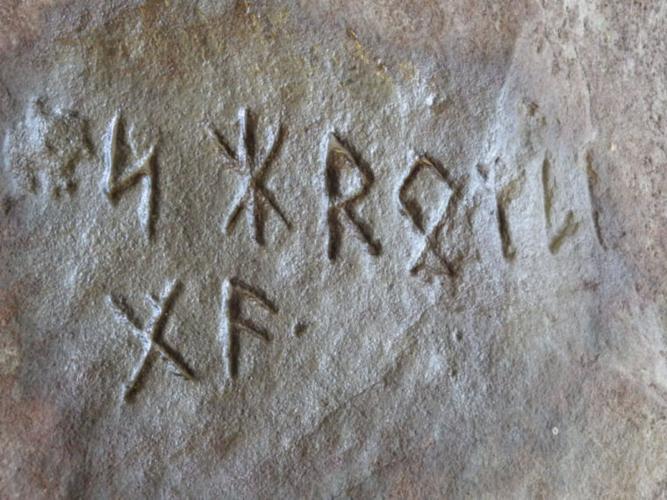


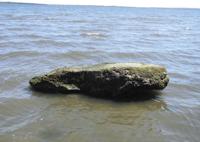


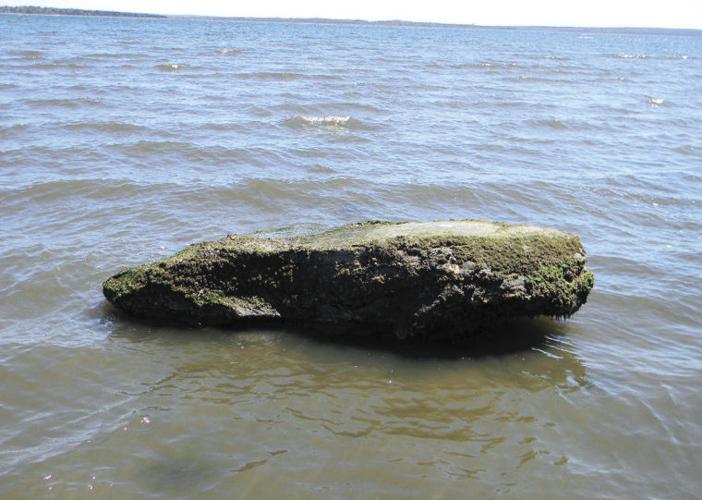
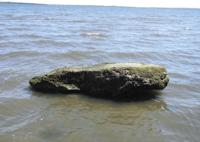
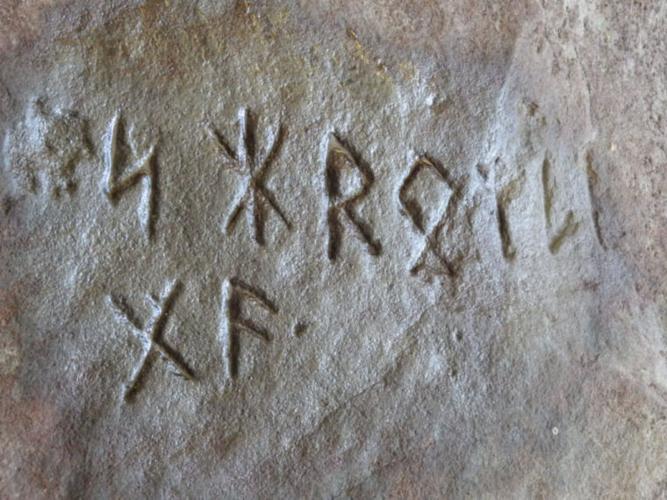
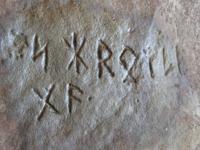
(0) comments
Welcome to the discussion.
Log In
Keep it Clean. Please avoid obscene, vulgar, lewd, racist or sexually-oriented language.
PLEASE TURN OFF YOUR CAPS LOCK.
Don't Threaten. Threats of harming another person will not be tolerated.
Be Truthful. Don't knowingly lie about anyone or anything.
Be Nice. No racism, sexism or any sort of -ism that is degrading to another person.
Be Proactive. Use the 'Report' link on each comment to let us know of abusive posts.
Share with Us. We'd love to hear eyewitness accounts, the history behind an article.